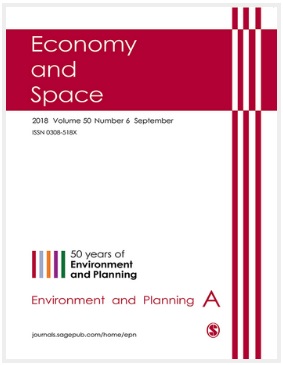The dynamics of spatial hierarchical processes displays fascinating images of the evolution of attraction basins of towns. Assuming in the present paper a random character of such complex processes, gravitational modeling is employed to depict changes in the nature of fuzzy boundaries between attraction basins in a hexagonal world, i.e. the geographical pattern central in the renowned and influential Christaller–Lösch central place theory in geography. The paper presents various interesting stylized maps of such stochastic processes. Our findings demonstrate that the collective behavior of actors in geographic space shows a white noise pattern that mirrors a fuzzy gravitation towards large population concentrations. These results support the validity of the conventional central place theory.

